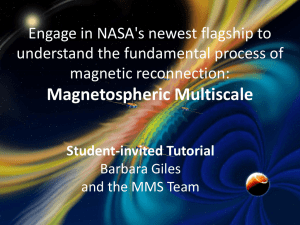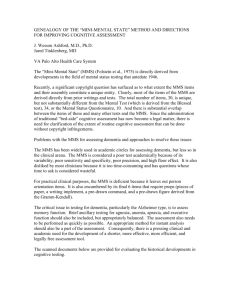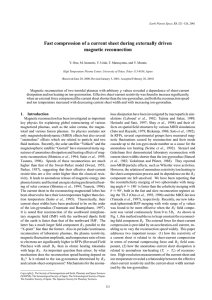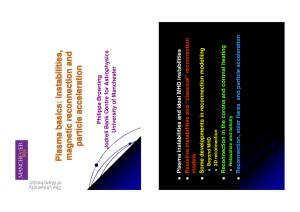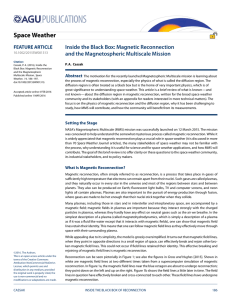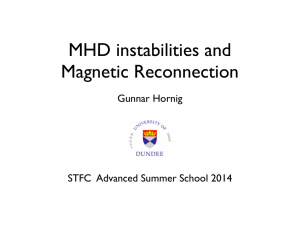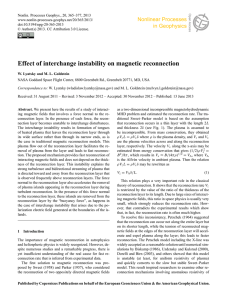MMS Magnetospheric MultiScale Mission
advertisement
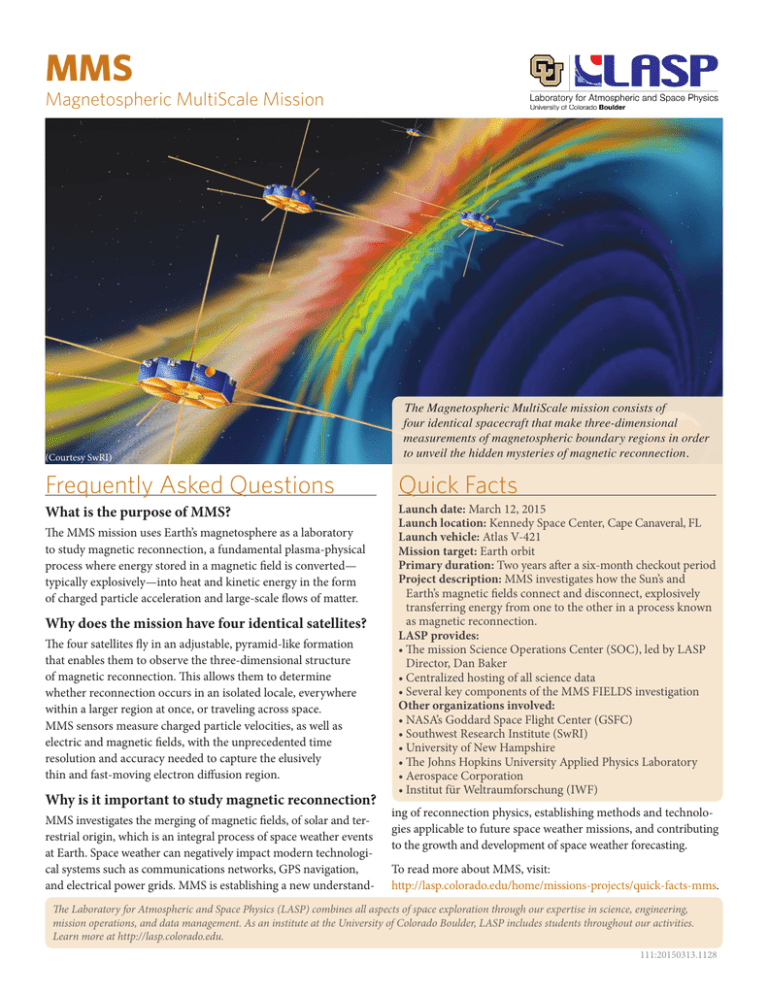
MMS Magnetospheric MultiScale Mission (Courtesy SwRI) The Magnetospheric MultiScale mission consists of four identical spacecraft that make three-dimensional measurements of magnetospheric boundary regions in order to unveil the hidden mysteries of magnetic reconnection. Frequently Asked Questions Quick Facts What is the purpose of MMS? Launch date: March 12, 2015 Launch location: Kennedy Space Center, Cape Canaveral, FL Launch vehicle: Atlas V-421 Mission target: Earth orbit Primary duration: Two years after a six-month checkout period Project description: MMS investigates how the Sun’s and Earth’s magnetic fields connect and disconnect, explosively transferring energy from one to the other in a process known as magnetic reconnection. LASP provides: •The mission Science Operations Center (SOC), led by LASP Director, Dan Baker •Centralized hosting of all science data •Several key components of the MMS FIELDS investigation Other organizations involved: •NASA’s Goddard Space Flight Center (GSFC) •Southwest Research Institute (SwRI) •University of New Hampshire •The Johns Hopkins University Applied Physics Laboratory •Aerospace Corporation •Institut für Weltraumforschung (IWF) The MMS mission uses Earth’s magnetosphere as a laboratory to study magnetic reconnection, a fundamental plasma-physical process where energy stored in a magnetic field is converted— typically explosively—into heat and kinetic energy in the form of charged particle acceleration and large-scale flows of matter. Why does the mission have four identical satellites? The four satellites fly in an adjustable, pyramid-like formation that enables them to observe the three-dimensional structure of magnetic reconnection. This allows them to determine whether reconnection occurs in an isolated locale, everywhere within a larger region at once, or traveling across space. MMS sensors measure charged particle velocities, as well as electric and magnetic fields, with the unprecedented time resolution and accuracy needed to capture the elusively thin and fast-moving electron diffusion region. Why is it important to study magnetic reconnection? MMS investigates the merging of magnetic fields, of solar and terrestrial origin, which is an integral process of space weather events at Earth. Space weather can negatively impact modern technological systems such as communications networks, GPS navigation, and electrical power grids. MMS is establishing a new understand- ing of reconnection physics, establishing methods and technologies applicable to future space weather missions, and contributing to the growth and development of space weather forecasting. To read more about MMS, visit: http://lasp.colorado.edu/home/missions-projects/quick-facts-mms. The Laboratory for Atmospheric and Space Physics (LASP) combines all aspects of space exploration through our expertise in science, engineering, mission operations, and data management. As an institute at the University of Colorado Boulder, LASP includes students throughout our activities. Learn more at http://lasp.colorado.edu. 111:20150313.1128



